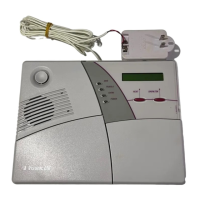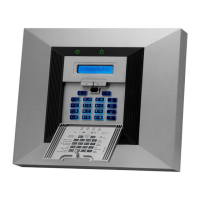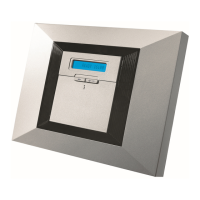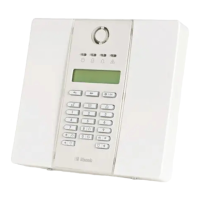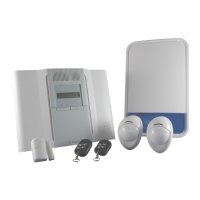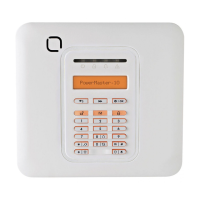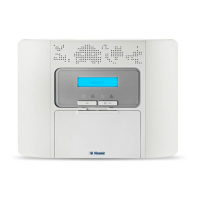INTRODUCTION
4 D-302755
1. Introduction
Overview
The PowerMaxComplete is a wireless alarm control
system that provides protection against burglary, fire
and tampering. In addition, it can be used to control a
light or an electrical appliance within your household
and/or to monitor the activity of disabled or elderly
people left at home. Status information is presented
visually and verbally, and in most cases a recorded
voice prompts you to take correct action - not
applicable in PowerMaxComplete that does not have
VOICE option.
The PowerMaxComplete includes an optional
partition feature. Partitioning allows you to have up to
three independently controllable areas with different
user codes assigned to each partition. A partition can
be armed or disarmed regardless of the status of the
other partitions within the system.
The PowerMaxComplete is governed by a control
panel (Figure 1) designed to collect data from various
sensors that are strategically located within and along
the perimeter of the protected site (Figure 2).
In the disarmed state, the system provides you with
visual and verbal status information, and initiates an
alarm if smoke is detected or upon disturbance in a
24-hour zone (a zone which is active 24-hours a day).
In the armed state, the system will initiate an alarm
upon detection of disturbance in any one of the
armed zones.
You will need a 4-digit security code to master the
system (code 0000 is disallowed), and you can
authorize 7 other persons to use the system by
providing them with their own security codes.
Moreover, you can obtain up to 8 multi-function key-
ring transmitters and proximity tags that will allow
you and other users to easily control major functions.
Proximity tags enable authorized people to enter
restricted areas. Presenting valid proximity tag, while
the system is armed (and when partitioning is set to
disabled), causes the system to disarm. Presenting
valid proximity tag, while the system is disarmed,
causes the system to be armed in AWAY (optional
HOME) mode.
The system identifies a wide range of events -
alarms, attempts to tamper with sensors and several
types of trouble. Events are automatically reported
via the public telephone network, GSM network (in
digital form), or GPRS network to central monitoring
stations and to private telephones (in plain language
and/or SMS messages). The person receiving such a
message is expected to investigate the event and act
accordingly.
CONTROL
KEYS
KEYPAD
COVER
(CLOSED)
DISPLAY
Figure 1. Control Panel with Covers Closed
IMPORTANT! All you need to know to secure your
premises can be found in Chapter 2 of this manual.
If you are not familiar with some of the terms used
here, refer to APPENDIX B at the end of this guide.



